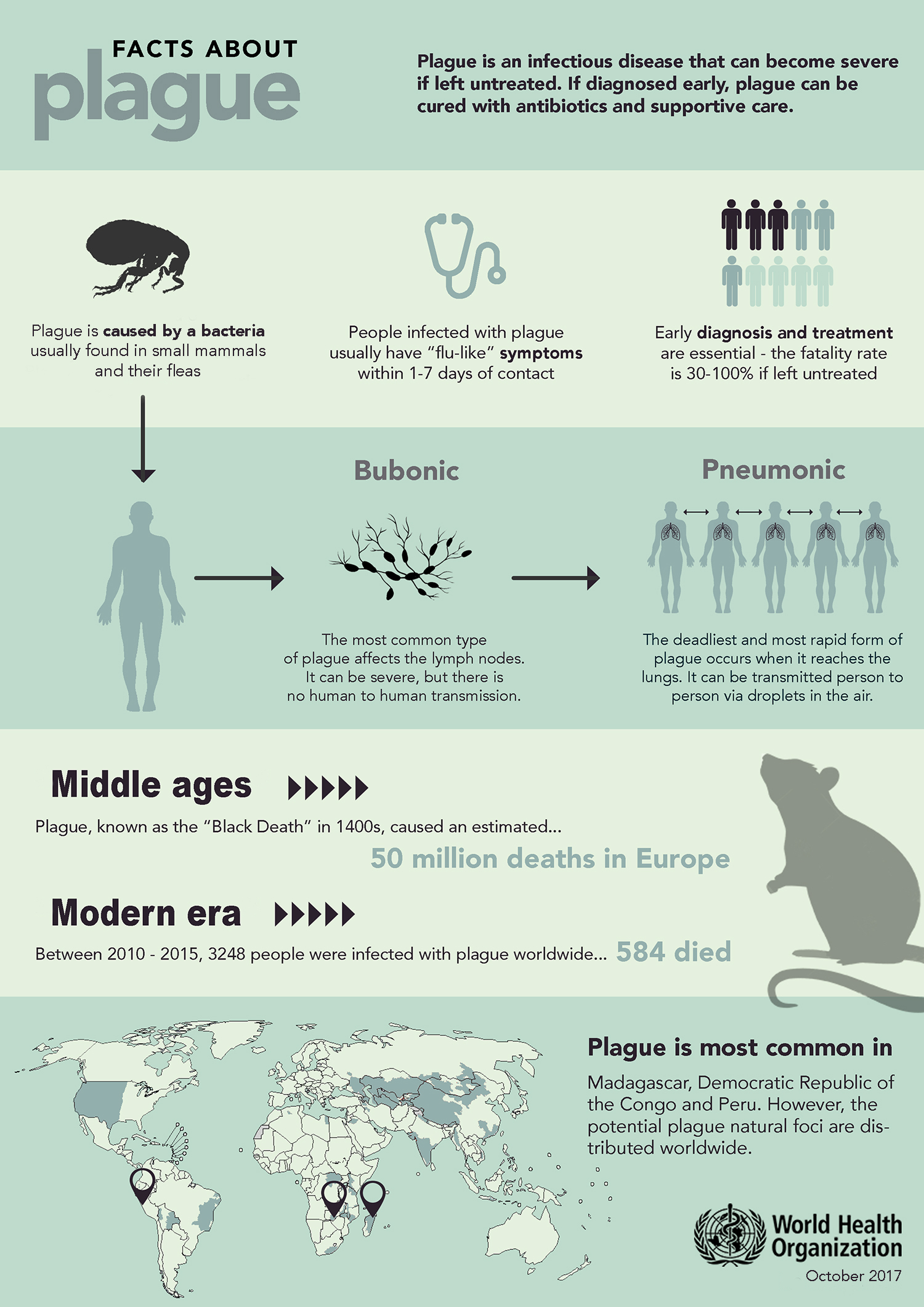
By Kami Klein
Experts are alarmed at a recent outbreak of plague that is spreading through major populated areas in Madagascar. So far there has been 1,836 suspected or confirmed cases of pneumonic plague and 133 deaths in areas that have never seen this form of the disease before.
Every year Africa and Madagascar deal with an outbreak of plague within their borders. The World Health Organization (WHO) anticipates this in outlying areas and is ready to step in with antibiotics and information which eventually curtails the outbreak. This year, health organizations around the world were surprised as the plague has spread so quickly and is primarily being found in heavily populated areas. While they anticipate around 400 cases a year, this year’s outbreak began sooner and a different strain of the disease has the world watching.
What is causing the alarm is that 65% of the plague occurring in Madagascar, pneumonic plague, is the only form that can be spread from human to human through droplets from coughing. This makes containing the disease much more difficult and the chances that there will be more deaths almost certain.
According to the Center for Disease Control here in the United States, there are major differences in bubonic plague and pneumonic. Bubonic plague is spread to humans by the bites of infected fleas that live on small mammals such as rats.Without treatment, it kills up to two-thirds of those infected. One in 10 cases will develop into pneumonic plague which is almost always fatal if not treated quickly with antibiotics. This form, can and will spread from human to human which is the case in this outbreak. The good news is that a simple short course of antibiotics can cure the plague, providing it is given early.
Dr. Tim Jagatic told BBC News that the outbreak had spread to populated areas when a man infected with bubonic plague had traveled from the highlands to the capital and then on to the coastal city of Tamatave by bus.
“He had the bubonic form of the plague and entered into one of the major cities, where the bubonic version of the disease had the potential of turning into the pneumonic form without treatment.”
“He was in a closed environment with many people when he started to develop severe symptoms, and he started to transmit the pneumonic form of the disease to others.”
“So it wasn’t recognised until later,” he said, allowing the disease to “proliferate over a period of time unabated”.
This case infected 31 other people, according to the WHO, four of whom died. It wasn’t until a couple of weeks later that an outbreak of the plague was detected and officially confirmed.
Although a travel ban has not been issued as of yet, officials do expect another spike in the disease before the season ends in April. Medical personnel are all on alert in parts of Africa that are most frequented by Madagascar citizens. WHO has delivered nearly 1.2 million doses of antibiotics and released $1.5 million dollars in emergency funds to fight the plague in Madagascar.
Though not widely publicized, the United States does have several cases of plague per year mostly in the Southwest. Dr Tim Jagatic, a doctor with Doctors without Borders currently working in Madagascar stated that the conditions which cause the plague outbreaks on the African island are also found in the US.
“Something today that very few people are aware of is that in the United States for instance, in the south-west, there’s an average of 11 cases of bubonic plague per year.
“These outbreaks occur simply because this is a bacteria which is able to maintain a reservoir in wild animals and every once in awhile, when humans come into contact with fleas that have had contact with the wild animals, it is able to transmit to humans.”
Sources: BBC, WHO,CDC, New York Post CNN

 The worst plague to hit Madagascar since the 1950s is threatening to destroy crops and create food shortages.
The worst plague to hit Madagascar since the 1950s is threatening to destroy crops and create food shortages.